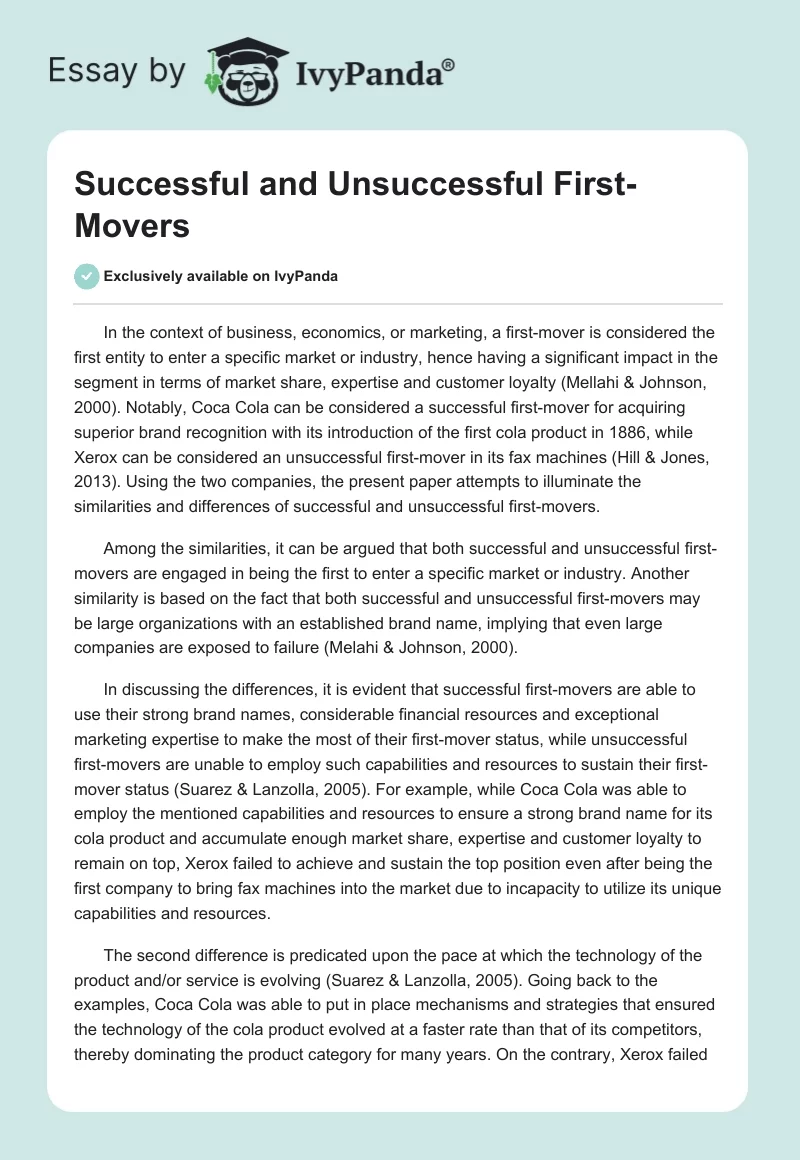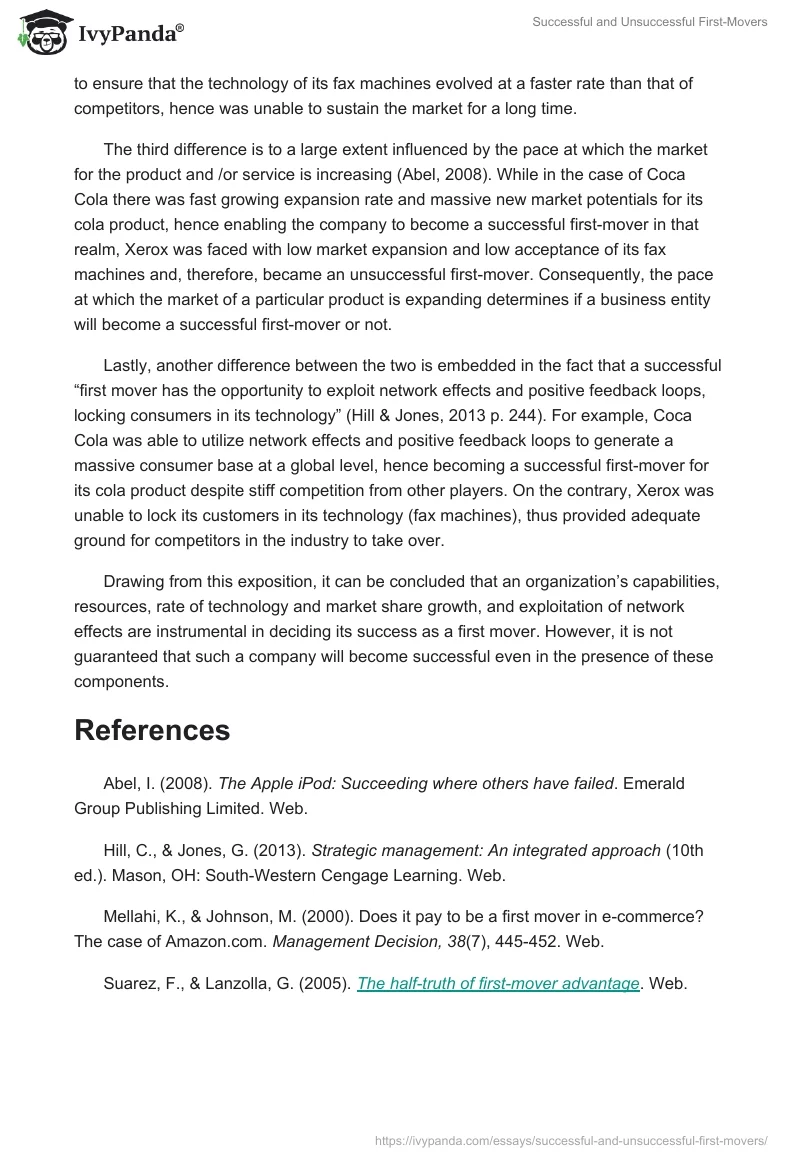In the context of business, economics, or marketing, a first-mover is considered the first entity to enter a specific market or industry, hence having a significant impact in the segment in terms of market share, expertise and customer loyalty (Mellahi & Johnson, 2000). Notably, Coca Cola can be considered a successful first-mover for acquiring superior brand recognition with its introduction of the first cola product in 1886, while Xerox can be considered an unsuccessful first-mover in its fax machines (Hill & Jones, 2013). Using the two companies, the present paper attempts to illuminate the similarities and differences of successful and unsuccessful first-movers.
Among the similarities, it can be argued that both successful and unsuccessful first-movers are engaged in being the first to enter a specific market or industry. Another similarity is based on the fact that both successful and unsuccessful first-movers may be large organizations with an established brand name, implying that even large companies are exposed to failure (Melahi & Johnson, 2000).
In discussing the differences, it is evident that successful first-movers are able to use their strong brand names, considerable financial resources and exceptional marketing expertise to make the most of their first-mover status, while unsuccessful first-movers are unable to employ such capabilities and resources to sustain their first-mover status (Suarez & Lanzolla, 2005). For example, while Coca Cola was able to employ the mentioned capabilities and resources to ensure a strong brand name for its cola product and accumulate enough market share, expertise and customer loyalty to remain on top, Xerox failed to achieve and sustain the top position even after being the first company to bring fax machines into the market due to incapacity to utilize its unique capabilities and resources.
The second difference is predicated upon the pace at which the technology of the product and/or service is evolving (Suarez & Lanzolla, 2005). Going back to the examples, Coca Cola was able to put in place mechanisms and strategies that ensured the technology of the cola product evolved at a faster rate than that of its competitors, thereby dominating the product category for many years. On the contrary, Xerox failed to ensure that the technology of its fax machines evolved at a faster rate than that of competitors, hence was unable to sustain the market for a long time.
The third difference is to a large extent influenced by the pace at which the market for the product and /or service is increasing (Abel, 2008). While in the case of Coca Cola there was fast growing expansion rate and massive new market potentials for its cola product, hence enabling the company to become a successful first-mover in that realm, Xerox was faced with low market expansion and low acceptance of its fax machines and, therefore, became an unsuccessful first-mover. Consequently, the pace at which the market of a particular product is expanding determines if a business entity will become a successful first-mover or not.
Lastly, another difference between the two is embedded in the fact that a successful “first mover has the opportunity to exploit network effects and positive feedback loops, locking consumers in its technology” (Hill & Jones, 2013 p. 244). For example, Coca Cola was able to utilize network effects and positive feedback loops to generate a massive consumer base at a global level, hence becoming a successful first-mover for its cola product despite stiff competition from other players. On the contrary, Xerox was unable to lock its customers in its technology (fax machines), thus provided adequate ground for competitors in the industry to take over.
Drawing from this exposition, it can be concluded that an organization’s capabilities, resources, rate of technology and market share growth, and exploitation of network effects are instrumental in deciding its success as a first mover. However, it is not guaranteed that such a company will become successful even in the presence of these components.
References
Abel, I. (2008). The Apple iPod: Succeeding where others have failed. Emerald Group Publishing Limited. Web.
Hill, C., & Jones, G. (2013). Strategic management: An integrated approach (10th ed.). Mason, OH: South-Western Cengage Learning. Web.
Mellahi, K., & Johnson, M. (2000). Does it pay to be a first mover in e-commerce? The case of Amazon.com. Management Decision, 38(7), 445-452. Web.
Suarez, F., & Lanzolla, G. (2005). The half-truth of first-mover advantage. Web.


